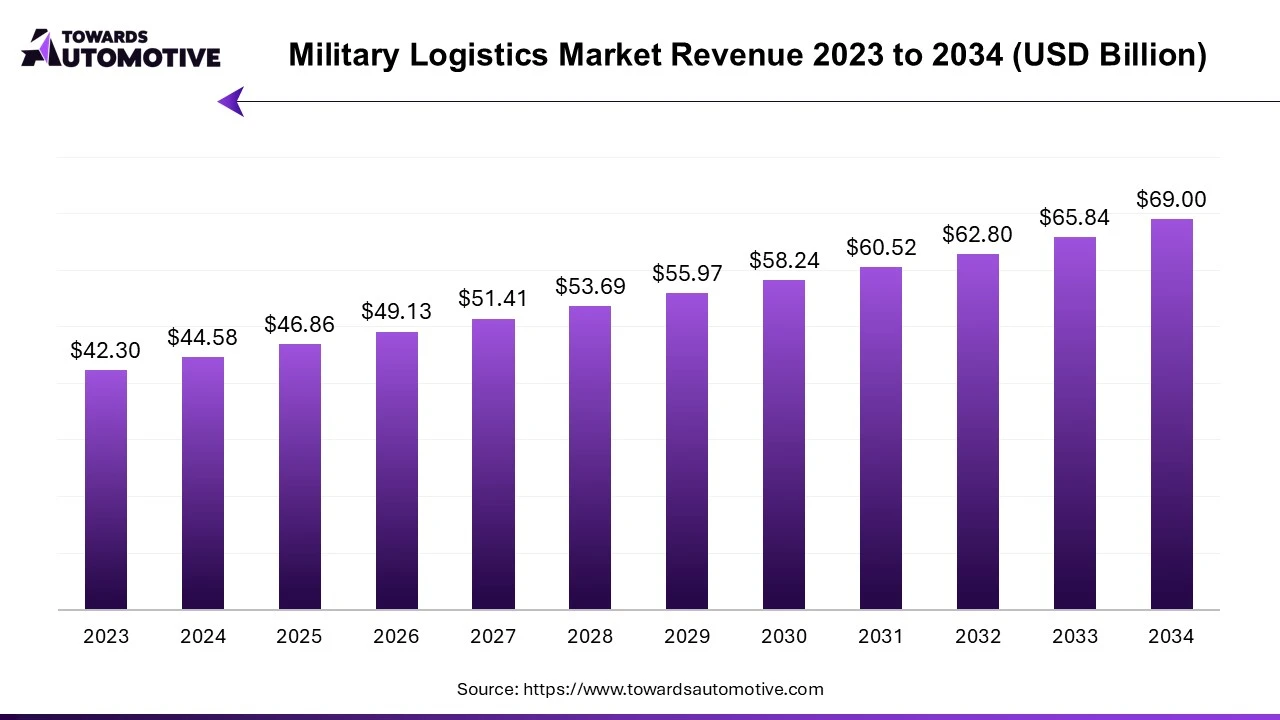The global military logistics market is set to experience significant growth in the coming years. Valued at USD 44.58 billion in 2024, it is projected to reach USD 69.00 billion by 2034, expanding at a compound annual growth rate (CAGR) of 4.94%. One of the key drivers behind this growth is the critical role that roadways play in military logistics, enabling the efficient movement of troops, equipment, and supplies to support military operations across the globe.

Get All the Details in Our Solution – Download Brochure @ https://www.towardsautomotive.com/download-brochure/1148
Significance of Roadway Infrastructure in Military Logistics
Road infrastructure is vital to the success of military logistics, providing the necessary networks for rapid deployment and mobility. As modern warfare increasingly demands speed and agility, well-maintained roadways ensure that logistical support reaches frontline forces without delay. Efficient road systems are essential not only for the swift movement of personnel but also for the transportation of critical supplies such as fuel, ammunition, and medical resources. This ability to move resources quickly and reliably is a key factor driving the market’s expansion.
As the global demand for military readiness grows, the need for improved infrastructure becomes even more crucial. The expansion and modernization of road networks help military logistics adapt to the evolving demands of contemporary warfare, where rapid deployment and operational agility are paramount. Well-developed roadways allow military forces to maneuver effectively, delivering essential resources to where they are needed most.
Impact of Investments in Roadway Improvements
Investments in roadway infrastructure improvements are directly contributing to the growth of the military logistics market. Enhanced road surfaces, better signage, and increased road capacity all serve to optimize logistical operations. By reducing transit times and ensuring reliable access to critical resources, these improvements help military forces respond more effectively in conflict zones, especially in remote or difficult-to-reach areas.
Strategically planned routes also play an important role in ensuring the safe and timely transport of high-value materials and sensitive equipment. In addition, improvements to road infrastructure allow military logistics to better handle the demands of modern warfare, which often involves transporting larger loads over longer distances. These improvements reduce delays and improve access to crucial materials, thus supporting the overall mission’s success.
Technological Advancements in Roadway Logistics
In addition to physical improvements, advancements in technology are transforming military logistics operations. Technologies such as automated vehicles and real-time tracking systems are revolutionizing the way military convoys are managed. These innovations enhance efficiency, safety, and precision in logistics planning.
Automated vehicles, for example, help reduce human error and increase the reliability of convoys, while real-time tracking systems provide greater oversight and allow for precise management of resources. This integration of technology ensures that logistics operations are executed more efficiently and securely, further driving growth in the military logistics market.
Invest in Our Premium Strategic Solution @ https://www.towardsautomotive.com/price/1148
You can place an order or ask any questions, please feel free to contact us at sales@towardsautomotive.com
Explore the comprehensive statistics and insights on automotive industry data and its associated segmentation: Get a Subscription
For Latest Update Follow Us: https://www.linkedin.com/company/towards-automotive
